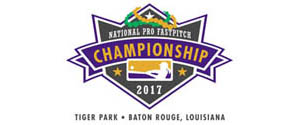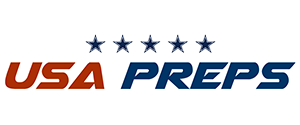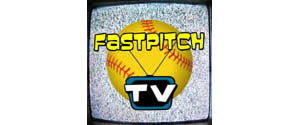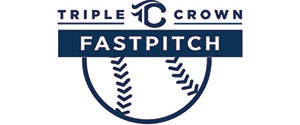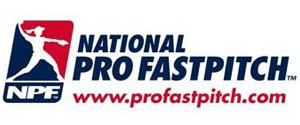This discussion is exactly why I think ASA 8-7P needs some refinement when dealing with dropped third strikes to make treatment of the rule consistent for all retired offensive players.
Under PONY rules the retired batter has no right to advance to 1B in the original situation. Therefore, if it was being played as a true PONY tournament the umpire should have called the runner out because the runner's actions clearly confused F2. PONY 9-2b does not have a "NOTE" or clarification like ASA 8-7P. Umpires are able to invoke interference without any encumbrance. Interference in PONY is also generally a delayed dead ball call, so the ump can call interference but let the play continue to see how it turns out (the play is immediately dead in most ASA interference calls). PONY also doesn't remove the runner closest to home. In that situation, under PONY rules the umpire should have returned all the runners to their original bases and play continues. (Which is also what invoking ASA 10-3C would accomplish.)
My only comment would be that it would be surprising if it was a PONY tournament - in my area there are a number of PONY associations but all the rec tournaments they participate in are played under ASA rules.
If it was being played under ASA rules, we're back to ASA 8-7P.
MTR berated me for calling the retired player a "retired runner," and instead called the player a "retired batter." That is the term ASA uses in their rule clarification in July 2011, but they also use the term "retired offensive player" so it seems enforcement doesn't hinge on that definition.
So as not to reprint it, here's the link that has the full language of the rule and the ASA clarification of the rule (please observe that NOTE does not have "entitled" which was added in 2012) [http://www.asasoftball.com/umpires/clarifications_2011_July.asp.
To briefly summarize ASA's "clarification," they say that a) the simple act of running by the retired batter does not constitute interference; b) if F2 makes a bad throw to F3, it is not interference; c) if F2 making a play at 1B hits the "retired batter," it IS interference.
For situations in between a wild throw and a plunk, what is the guidance? ASA says, "If the umpire judges the action of the retired batter to have hindered, impeded, or confused the defense, this is interference." As an umpire, if I think F2's lob throw to F3 was to avoid hitting the "retired offensive player" (impeded throw) or she had to side-step to get the throw off and it was late to F3 (hindered throw), then I should call the retired offensive player out as well as the runner closest to home. I concede there has to be a play on the runner at 1B, but a relay from F3 to F4 would qualify. However, as I read MTR's logic this should never be called because the NOTE gives the retired batter a blanket amnesty to run.
Unless I mis-read MTR's comments, that is the crux of my problem with how most umpires enforce (or don't enforce) 8-7P on a dropped third strike when the batter isn't entitled to advance.
Anti-Clone picks up on the same issue I have. If the "retired offensive player" isn't a "retired runner," 8-7P will never apply. If we follow MTR's logic, then Anti-Clone's statement is correct that the player could run willy-nilly and her mere act of running would not constitute interference - at least it wouldn't if we follow MTR's view of the NOTE on 8-7P.
Hence, my judgment that the NOTE (again, not EXCEPTION but NOTE) in ASA 8-7P that adds "entitled" does so to alert umpires to not give a blanket amnesty from an interference call whenever there's a dropped third strike, even if they aren't entitled to it. ASA's July 2011 clarification clearly says it is the umpire's judgment if there is interference. It isn't the NOTE, but the ASA clarification that says the simple act of running by the retired offensive player is not to be considered interference. But also that it doesn't exempt our retired offensive player from being called for interference.
ASA would be doing everyone a favor if it dropped the "runner closest to home is out" penalty on 8-7P as well as the dropped third strike sentence in NOTE. NFHS invokes no such penalty and in most ASA rules punitive outs are only called for intentional behavior. Rule 8-7P was originally written when ASA had the violation as intentional. When they removed "intentional" from many of the rules, some of them no longer made sense - this is one of them.
As it stands, ASA's logic is flawed. It penalizes a retired runner for continuing to run, but not a retired batter. It clearly says the umpire can call interference and apply 8-7P to a retired offensive player, but then it takes away one form of interference (confusion). In the situation I don't think it treats the catcher and batter as equals. Somehow the catcher is supposed to be all-knowing while its OK for the batter to be confused - or deceitful - and run when they aren't entitled.
MTR and others can trash the wisdom of applying 10-3C. To me its looking smarter all the time.
The Umpire Corner
NFHS invokes no such penalty
Might want to read FED 8-6 ART 16, PENALTY
- Comp
- Posts: 589
- Joined: Sun Jun 22, 2008 11:27 am
BearFlagFan wrote:If it was being played under ASA rules, we're back to ASA 8-7P.
MTR berated me for calling the retired player a "retired runner," and instead called the player a "retired batter." That is the term ASA uses in their rule clarification in July 2011, but they also use the term "retired offensive player" so it seems enforcement doesn't hinge on that definition.
I make that distinction as the rule (continuing to run) does apply to a retired runner and retired batter runner, but not the retired batter (to 1B only). I find the the terminology difference easier to explain when walking through the scenario with someone.
But you are correct, ASA oftens uses terms as a matter of convenience. I guess it works for them. I find it doesn't when training new umpires.
To briefly summarize ASA's "clarification," they say that a) the simple act of running by the retired batter does not constitute interference; b) if F2 makes a bad throw to F3, it is not interference; c) if F2 making a play at 1B hits the "retired batter," it IS interference.
For situations in between a wild throw and a plunk, what is the guidance? ASA says, "If the umpire judges the action of the retired batter to have hindered, impeded, or confused the defense, this is interference." As an umpire, if I think F2's lob throw to F3 was to avoid hitting the "retired offensive player" (impeded throw) or she had to side-step to get the throw off and it was late to F3 (hindered throw), then I should call the retired offensive player out as well as the runner closest to home. I concede there has to be a play on the runner at 1B, but a relay from F3 to F4 would qualify. However, as I read MTR's logic this should never be called because the NOTE gives the retired batter a blanket amnesty to run.
Unless I mis-read MTR's comments, that is the crux of my problem with how most umpires enforce (or don't enforce) 8-7P on a dropped third strike when the batter isn't entitled to advance.
How can you call a retired offensive player out twice? BTW, NFHS has the same exception from INT as ASA.
Anti-Clone picks up on the same issue I have. If the "retired offensive player" isn't a "retired runner," 8-7P will never apply. If we follow MTR's logic, then Anti-Clone's statement is correct that the player could run willy-nilly and her mere act of running would not constitute interference - at least it wouldn't if we follow MTR's view of the NOTE on 8-7P.
It isn't my view. It has been ASA's interpretation since the 90's. When the continuing to run was put in the books, the umpires started to call the retired batters out for running to 1B. IOW, enforcing the rule as you are suggesting. Problem is every coach went bananas as they were teaching their players to take off anything there was a 3rd strike. When there were other runners on base, the umpire would call the interference if the catcher made a play on the retired batter. That lasted one year and the exception was put in. If you think that will not happen again it the interpretation is changed, I would be shocked. But if they do change it, and I wouldn't be surprised if it was, I think we will witness some chaotic events on the field and just as much, if not more, BS from coaches trying to defend their players actions.
Hence, my judgment that the NOTE (again, not EXCEPTION but NOTE) in ASA 8-7P that adds "entitled" does so to alert umpires to not give a blanket amnesty from an interference call whenever there's a dropped third strike, even if they aren't entitled to it. ASA's July 2011 clarification clearly says it is the umpire's judgment if there is interference. It isn't the NOTE, but the ASA clarification that says the simple act of running by the retired offensive player is not to be considered interference. But also that it doesn't exempt our retired offensive player from being called for interference.
Have no idea where you came up with "blanket amnesty" as the rule, note, exception or clarification make absolutely no such suggestion.
ASA would be doing everyone a favor if it dropped the "runner closest to home is out" penalty on 8-7P as well as the dropped third strike sentence in NOTE. NFHS invokes no such penalty and in most ASA rules punitive outs are only called for intentional behavior. Rule 8-7P was originally written when ASA had the violation as intentional. When they removed "intentional" from many of the rules, some of them no longer made sense - this is one of them.
Actually, ISF, NFHS & NCAA all use the "runner closest to home" and since ASA has more involved system when it comes to changing rules, those associations often act first, so you may need to talk to them.
As it stands, ASA's logic is flawed. It penalizes a retired runner for continuing to run, but not a retired batter. It clearly says the umpire can call interference and apply 8-7P to a retired offensive player, but then it takes away one form of interference (confusion). In the situation I don't think it treats the catcher and batter as equals. Somehow the catcher is supposed to be all-knowing while its OK for the batter to be confused - or deceitful - and run when they aren't entitled.
I doubt the kids came up with this devious practice all by themselves. OTOH, why do you think the batters just run everytime whether the rule applies or not? Coaches too lazy to teach them the rules or just don't care or just think Maybe the answer is to just get rid of the U3K allowance all together. And that wouldn't be unheard of since this hasn't always been the rule.
MTR and others can trash the wisdom of applying 10-3C. To me its looking smarter all the time.
10.3.C cannot be applied as ths situation has nothing to do with a reversal of or delayed decision placing the other team in jeopardy. You would have a better argument, though still not applicable, with 10.1 which gives the plate umpire the authority to make decisions on situations not covered in the rules. This one is often misapplied by people looking for a way out of a ruling for which they do not care. The reason I say this is not applicable is because the situation in question is covered in the rules.
- MTR
- Posts: 2317
- Joined: Thu Jan 03, 2008 5:21 am
This reminds me of one of those online discussions that, if they'd been done in person we'd likely come to an agreement or close to one with respective differences not that great in about 5 minutes.
You can't it was lazy sentence construction and I never meant that. I meant calling the runner closest to home out. You bring up a good point about NFHS because I think ASA just lifted the NFHS "clarification" from that year. NFHS sent out training slides IDing 8-6-18 (NFHS equivalent of 8-7P) as a rule change since they removed "intentionally" and used the plunk scenario in their slide. Then in Feb 2011 their "clarification" reads nearly the same as ASA's of June 2011.
IF ASA were to just make 8-7P as written apply to anyone taking off on a dropped 3rd who wasn't entitled, then yes I agree chaos and complaints would reign. But what I said was when they (and NFHS) dropped "intentionally" from 8-7P they lowered the standard and the egregiousness of the offense. Therefore, I think they should also remove the penalty of calling out the runner closest to home too. PONY has this right. Instead, the NOTE should say, "If intentional, also call the runner out closest to home." That way if a runner does continue intentionally, there is an additional penalty. This would also be consistent with how ASA treats breaking up a double-play - if in umpire's judgment the intent is to break up double play, the umpire can call out the other runner too.
In your earlier posts, you insisted the NOTE could only apply to the "retired batter." If that is correct, then you could never call the "retired batter" for interference JUST for running, even if she continues on to 2nd base. The rules define a "runner" as the offensive player once she reaches 1B safely. But she didn't reach it safely. She wasn't ENTITLED to it. We can't say NOTE applies to the "retired batter" but doesn't apply to the "retired runner." Indeed, your first answers to this issue was the ump ruled correctly, it was a DMC. Except that the runner continued on to 2B. If you originally didn't think NOTE applied to the (lets call her) the "retired offensive player" then the act of running from 1B to 2B again violates the interference rule and just "confusing" the catcher is enough to call her out. That is why I'm calling it a blanket amnesty for running.
Again, this wasn't my creation, it was a senior, respected UIC's solution. What he said was if you don't kill the situation immediately and it gets out of hand BECAUSE the retired offense player ran, and the result is additional outs and/or runners advance, you have an outcome that is different from the umpire's original decision, which is batter out on dropped 3rd strike. That is the textbook definition of placing the other team in jeopardy.
I really do hope ASA further clarifies this, but in the meantime I remain conservative in how I call it, but that is better than most umps who, as I originally said, just let it play out even when egregious interference takes place.
One thing I do know is there are few coaches who even know 8-7P exist, so much as understanding what the NOTE means, so if I'm in a situation where I call it, I'll feel on solid ground making the call. I also have to brush up on my PONY rules since I do a PONY association in my area.
Finally, even when I disagree with MTR, which is rare, I feel like I'm educating myself and hopefully others so I appreciate MTR's contributions.
How can you call a retired offensive player out twice? BTW, NFHS has the same exception from INT as ASA.
You can't it was lazy sentence construction and I never meant that. I meant calling the runner closest to home out. You bring up a good point about NFHS because I think ASA just lifted the NFHS "clarification" from that year. NFHS sent out training slides IDing 8-6-18 (NFHS equivalent of 8-7P) as a rule change since they removed "intentionally" and used the plunk scenario in their slide. Then in Feb 2011 their "clarification" reads nearly the same as ASA's of June 2011.
When there were other runners on base, the umpire would call the interference if the catcher made a play on the retired batter. That lasted one year and the exception was put in. If you think that will not happen again it the interpretation is changed, I would be shocked.
IF ASA were to just make 8-7P as written apply to anyone taking off on a dropped 3rd who wasn't entitled, then yes I agree chaos and complaints would reign. But what I said was when they (and NFHS) dropped "intentionally" from 8-7P they lowered the standard and the egregiousness of the offense. Therefore, I think they should also remove the penalty of calling out the runner closest to home too. PONY has this right. Instead, the NOTE should say, "If intentional, also call the runner out closest to home." That way if a runner does continue intentionally, there is an additional penalty. This would also be consistent with how ASA treats breaking up a double-play - if in umpire's judgment the intent is to break up double play, the umpire can call out the other runner too.
Have no idea where you came up with "blanket amnesty" as the rule, note, exception or clarification make absolutely no such suggestion.
In your earlier posts, you insisted the NOTE could only apply to the "retired batter." If that is correct, then you could never call the "retired batter" for interference JUST for running, even if she continues on to 2nd base. The rules define a "runner" as the offensive player once she reaches 1B safely. But she didn't reach it safely. She wasn't ENTITLED to it. We can't say NOTE applies to the "retired batter" but doesn't apply to the "retired runner." Indeed, your first answers to this issue was the ump ruled correctly, it was a DMC. Except that the runner continued on to 2B. If you originally didn't think NOTE applied to the (lets call her) the "retired offensive player" then the act of running from 1B to 2B again violates the interference rule and just "confusing" the catcher is enough to call her out. That is why I'm calling it a blanket amnesty for running.
10.3.C cannot be applied as ths situation has nothing to do with a reversal of or delayed decision placing the other team in jeopardy.
Again, this wasn't my creation, it was a senior, respected UIC's solution. What he said was if you don't kill the situation immediately and it gets out of hand BECAUSE the retired offense player ran, and the result is additional outs and/or runners advance, you have an outcome that is different from the umpire's original decision, which is batter out on dropped 3rd strike. That is the textbook definition of placing the other team in jeopardy.
I really do hope ASA further clarifies this, but in the meantime I remain conservative in how I call it, but that is better than most umps who, as I originally said, just let it play out even when egregious interference takes place.
One thing I do know is there are few coaches who even know 8-7P exist, so much as understanding what the NOTE means, so if I'm in a situation where I call it, I'll feel on solid ground making the call. I also have to brush up on my PONY rules since I do a PONY association in my area.
Finally, even when I disagree with MTR, which is rare, I feel like I'm educating myself and hopefully others so I appreciate MTR's contributions.
- BearFlagFan
- Posts: 24
- Joined: Wed Oct 19, 2011 12:10 pm
BearFlagFan wrote: You bring up a good point about NFHS because I think ASA just lifted the NFHS "clarification" from that year.
ASA's interpretation of the retired batter running not being considered interference has been around since, at least, the late 90s.
NFHS sent out training slides IDing 8-6-18 (NFHS equivalent of 8-7P) as a rule change since they removed "intentionally" and used the plunk scenario in their slide. Then in Feb 2011 their "clarification" reads nearly the same as ASA's of June 2011.
Actually, it is 8.6.16.c and they printed it this year with the word "intentionally" included which was a typo. We were directed to delete it when we received the books.
IF ASA were to just make 8-7P as written apply to anyone taking off on a dropped 3rd who wasn't entitled, then yes I agree chaos and complaints would reign.
Well, this is what happens when someone arbitrarily changes the wording (the adding of the word "entitled" was not in an approved rule change) without thinking or taking the ramifications of such a change into consideration. Just the addition of that word negates the sentence. If the player were entitled to run on the play, his/her action wouldn't fall under an rule on interference.
But what I said was when they (and NFHS) dropped "intentionally" from 8-7P they lowered the standard and the egregiousness of the offense. Therefore, I think they should also remove the penalty of calling out the runner closest to home too. PONY has this right. Instead, the NOTE should say, "If intentional, also call the runner out closest to home." That way if a runner does continue intentionally, there is an additional penalty. This would also be consistent with how ASA treats breaking up a double-play - if in umpire's judgment the intent is to break up double play, the umpire can call out the other runner too.
Think about it. AFA the U3K, how can a retired batter run to 1B unintentionally? With other runners it is already covered under the umpire's responsibility to determine whether the action was interference or not. This was the entire purpose of removing the word "intent" from the majority of interference rulings.
In your earlier posts, you insisted the NOTE could only apply to the "retired batter." If that is correct, then you could never call the "retired batter" for interference JUST for running, even if she continues on to 2nd base. The rules define a "runner" as the offensive player once she reaches 1B safely. But she didn't reach it safely. She wasn't ENTITLED to it. We can't say NOTE applies to the "retired batter" but doesn't apply to the "retired runner." Indeed, your first answers to this issue was the ump ruled correctly, it was a DMC. Except that the runner continued on to 2B. If you originally didn't think NOTE applied to the (lets call her) the "retired offensive player" then the act of running from 1B to 2B again violates the interference rule and just "confusing" the catcher is enough to call her out. That is why I'm calling it a blanket amnesty for running.
Well, that may be what you were reading. Isn't what I was stating, but I'll concede it I was not very clear. I understand why kids run to 1B on every 3rd strike, because they are told to by everyone. However, that is to get on 1st base. That is where that allowance ends.
10.3.C cannot be applied as ths situation has nothing to do with a reversal of or delayed decision placing the other team in jeopardy.
Again, this wasn't my creation, it was a senior, respected UIC's solution. What he said was if you don't kill the situation immediately and it gets out of hand BECAUSE the retired offense player ran, and the result is additional outs and/or runners advance, you have an outcome that is different from the umpire's original decision, which is batter out on dropped 3rd strike. That is the textbook definition of placing the other team in jeopardy.
It only places the other team in jeopardy if they don't know what they are doing. At some point, you have to let them play the game on both sides of the lines. That means knowing the rules and game situation. It isn't like this hasn't been going on for decades, and it has, so why is it now an issue? The situation isn't new and there have not been any major discussions at the Umpire or NUS committee meetings, nor any proposed rule changes to the rule. I have to wonder if this is only a problem because someone wants it to be a problem.
As I have stated before, wouldn't bother me if the rule U3K rule was just eliminated.
I really do hope ASA further clarifies this, but in the meantime I remain conservative in how I call it, but that is better than most umps who, as I originally said, just let it play out even when egregious interference takes place.
What you note here is akin to what has been suggested in this month's ASA Rules Clarifications where it is suggested that if a batter heads toward 1B thinking it was ball 4 (when it wasn't) the umpire should loud and clearly call time and bring the batter back. I understand what they are saying about game control, but since when are advancing runners stopped when allowed to advance simply because the batter left the batter's box.
One thing I do know is there are few coaches who even know 8-7P exist, so much as understanding what the NOTE means, so if I'm in a situation where I call it, I'll feel on solid ground making the call. I also have to brush up on my PONY rules since I do a PONY association in my area.
Finally, even when I disagree with MTR, which is rare, I feel like I'm educating myself and hopefully others so I appreciate MTR's contributions.
Well, I can only tell you what ASA's present stance and interpretation is. If it is going to change, I guess I'll find out in Dallas in November.
- MTR
- Posts: 2317
- Joined: Thu Jan 03, 2008 5:21 am
[
I actually meant the way the clarification reads. Read the Feb. 2011 clarification from NFHS and then the July 2011 clarification from ASA. Coincidence that they picked a wild throw to the outfield and a plunk as their two examples? Possible.
This year its 8-6-16c, but in 2011 it was 8-6-18 (there was a note saying the group of 8-6-16 rules had been updated to be consistent). Here is a link to the 2011 NFHS training slides clarifying 8-6-18 (now 8-6-16c). http://www.slideserve.com/maddox/2002-nfhs-softball-rules-changes Ignore that the link says 2002, if you go to the slides you'll see its 2011. Go to slides 20-22, it has the info. Speaking of coincidence, both NFHS and ASA mistakenly returned the word "intentionally" to those respective rules and both instructed us to cross them out. Hmmm...
I'm not sure, but considering NFHS has now felt the need to issue clarifications two years in a row on it, and ASA has issued both rule changes and clarifications, so they think its a deal. My theory is they only recently made 10U "big girl softball" with pretty much all the same rules as 12U and 14U. I can even remember coaching 12U and saying, "Now its big girl softball. No more cold plates, etc." Catchers are smarter at 12 and you can easily just add concepts like "with less than 2 outs and 1B occupied, dropped 3K doesn't count." Instead, its much easier to teach a 10U player to run to 1B on every dropped 3rd strike than it is to teach a 10U catcher to have the poise to know NOT to throw to 1B. Plus I think coaches catch on that most umps aren't going to call it, so they're now more aggressive about teaching it. At 14U and up catchers should know better and so am more empathetic to treating it as a DMC. But there are far more 10U rec teams out there than 14U-18U at all levels. Further, PONY has always been geared to younger ages. They think of the young rec players where I think ASA first asks themselves, "how does this play in an 18G game."
What's funny about that is I found a note on NFHS 8-6-16c this year that NFHS says that if a retired batter runs on a U3K who isn't entitled, the umpire should loudly and clearly declare the retired batter out.
MTR wrote:ASA's interpretation of the retired batter running not being considered interference has been around since, at least, the late 90s.
I actually meant the way the clarification reads. Read the Feb. 2011 clarification from NFHS and then the July 2011 clarification from ASA. Coincidence that they picked a wild throw to the outfield and a plunk as their two examples? Possible.
MTR wrote:Actually, it is 8.6.16.c and they printed it this year with the word "intentionally" included which was a typo. We were directed to delete it when we received the books.
This year its 8-6-16c, but in 2011 it was 8-6-18 (there was a note saying the group of 8-6-16 rules had been updated to be consistent). Here is a link to the 2011 NFHS training slides clarifying 8-6-18 (now 8-6-16c). http://www.slideserve.com/maddox/2002-nfhs-softball-rules-changes Ignore that the link says 2002, if you go to the slides you'll see its 2011. Go to slides 20-22, it has the info. Speaking of coincidence, both NFHS and ASA mistakenly returned the word "intentionally" to those respective rules and both instructed us to cross them out. Hmmm...
MTR wrote:It isn't like this hasn't been going on for decades, and it has, so why is it now an issue?
I'm not sure, but considering NFHS has now felt the need to issue clarifications two years in a row on it, and ASA has issued both rule changes and clarifications, so they think its a deal. My theory is they only recently made 10U "big girl softball" with pretty much all the same rules as 12U and 14U. I can even remember coaching 12U and saying, "Now its big girl softball. No more cold plates, etc." Catchers are smarter at 12 and you can easily just add concepts like "with less than 2 outs and 1B occupied, dropped 3K doesn't count." Instead, its much easier to teach a 10U player to run to 1B on every dropped 3rd strike than it is to teach a 10U catcher to have the poise to know NOT to throw to 1B. Plus I think coaches catch on that most umps aren't going to call it, so they're now more aggressive about teaching it. At 14U and up catchers should know better and so am more empathetic to treating it as a DMC. But there are far more 10U rec teams out there than 14U-18U at all levels. Further, PONY has always been geared to younger ages. They think of the young rec players where I think ASA first asks themselves, "how does this play in an 18G game."
MTR wrote:What you note here is akin to what has been suggested in this month's ASA Rules Clarifications where it is suggested that if a batter heads toward 1B thinking it was ball 4 (when it wasn't) the umpire should loud and clearly call time and bring the batter back. I understand what they are saying about game control, but since when are advancing runners stopped when allowed to advance simply because the batter left the batter's box.
What's funny about that is I found a note on NFHS 8-6-16c this year that NFHS says that if a retired batter runs on a U3K who isn't entitled, the umpire should loudly and clearly declare the retired batter out.
- BearFlagFan
- Posts: 24
- Joined: Wed Oct 19, 2011 12:10 pm
BearFlagFan wrote:[MTR wrote:ASA's interpretation of the retired batter running not being considered interference has been around since, at least, the late 90s.
I actually meant the way the clarification reads. Read the Feb. 2011 clarification from NFHS and then the July 2011 clarification from ASA. Coincidence that they picked a wild throw to the outfield and a plunk as their two examples? Possible.
Cannot find any reference in the ASA 2011 June Clarifications
MTR wrote:It isn't like this hasn't been going on for decades, and it has, so why is it now an issue?
I'm not sure, but considering NFHS has now felt the need to issue clarifications two years in a row on it, and ASA has issued both rule changes and clarifications, so they think its a deal.
Well, as previously noted, there was no rule change, simply an in-house edit without explanation or clarification.
My theory is they only recently made 10U "big girl softball" with pretty much all the same rules as 12U and 14U. I can even remember coaching 12U and saying, "Now its big girl softball. No more cold plates, etc." Catchers are smarter at 12 and you can easily just add concepts like "with less than 2 outs and 1B occupied, dropped 3K doesn't count." Instead, its much easier to teach a 10U player to run to 1B on every dropped 3rd strike than it is to teach a 10U catcher to have the poise to know NOT to throw to 1B. Plus I think coaches catch on that most umps aren't going to call it, so they're now more aggressive about teaching it. At 14U and up catchers should know better and so am more empathetic to treating it as a DMC. But there are far more 10U rec teams out there than 14U-18U at all levels. Further, PONY has always been geared to younger ages. They think of the young rec players where I think ASA first asks themselves, "how does this play in an 18G game."
ASA changed/dropped 10U rules for A ball in 2007, and B ball in 2008. And as noted, at the request of the teams. And I disagree with your assertion that the 18G is the primary concern. If anything, the discussions become almost insufferablly long as the effect of any change to rules involving JO are hashed out in detail.
MTR wrote:What you note here is akin to what has been suggested in this month's ASA Rules Clarifications where it is suggested that if a batter heads toward 1B thinking it was ball 4 (when it wasn't) the umpire should loud and clearly call time and bring the batter back. I understand what they are saying about game control, but since when are advancing runners stopped when allowed to advance simply because the batter left the batter's box.
What's funny about that is I found a note on NFHS 8-6-16c this year that NFHS says that if a retired batter runs on a U3K who isn't entitled, the umpire should loudly and clearly declare the retired batter out.
Nothing new there in ASA. We've been teaching that for a while
- MTR
- Posts: 2317
- Joined: Thu Jan 03, 2008 5:21 am
BearFlagFan wrote: Interference in PONY is also generally a delayed dead ball call, so the ump can call interference but let the play continue to see how it turns out (the play is immediately dead in most ASA interference calls). PONY also doesn't remove the runner closest to home. In that situation, under PONY rules the umpire should have returned all the runners to their original bases and play continues. (Which is also what invoking ASA 10-3C would accomplish.
Interference in PONY is an immediate dead ball. The only delayed dead ball in PONY for interference is plate umpire interference with the catcher's attempt to pick off or throw out a runner stealing.
- Anti-Clone
- Posts: 91
- Joined: Thu Feb 09, 2012 4:04 pm
My $.02
I've always thought that the difference between a BR running on an uncaught 3rd strike and a runner who has been called out continuing to run (and drawing a throw) is that in the case of the BR running, the defense (F2) knows exactly what happened (she caught the ball or didn't - two outs or not, 1st occupied or not) and is the person responsible for doing something.
In the case of a runner being out and continuing to run, drawing a throw, the defender who ultimately is playing on that runner could easily be unaware that the runner was called out.
An example might be (R1 on 2nd, R2 on 1st) a force out at 2nd followed by a throw to F3 at 1st where R2 continues on to third drawing a throw from F3 while R1 scores.
Right or wrong, That's how I've rationalized the thinking.
I've always thought that the difference between a BR running on an uncaught 3rd strike and a runner who has been called out continuing to run (and drawing a throw) is that in the case of the BR running, the defense (F2) knows exactly what happened (she caught the ball or didn't - two outs or not, 1st occupied or not) and is the person responsible for doing something.
In the case of a runner being out and continuing to run, drawing a throw, the defender who ultimately is playing on that runner could easily be unaware that the runner was called out.
An example might be (R1 on 2nd, R2 on 1st) a force out at 2nd followed by a throw to F3 at 1st where R2 continues on to third drawing a throw from F3 while R1 scores.
Right or wrong, That's how I've rationalized the thinking.
- HugoTafurst
- Posts: 203
- Joined: Sat Jan 05, 2008 11:56 am
Why does everyone assume that F2 is throwing to 1b to "retire" the "retired batter?" Can F2 not be considered to be trying to pick off R3? The retired batter can certainly be called out if interfering with a throw to F3 attempting to pick off R3, can't they?
Run your mouth when I'm not around
Its easy to achieve
You cry to weak friends that sympathize
- Pantera, Walk
Its easy to achieve
You cry to weak friends that sympathize
- Pantera, Walk
-

Sam - Premium Member

- Posts: 3174
- Joined: Wed Jan 16, 2008 8:22 am
- Location: Norco, California
41 posts
• Page 4 of 5 • 1, 2, 3, 4, 5






